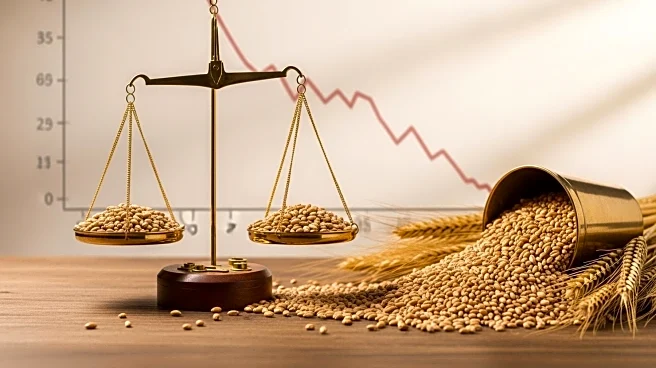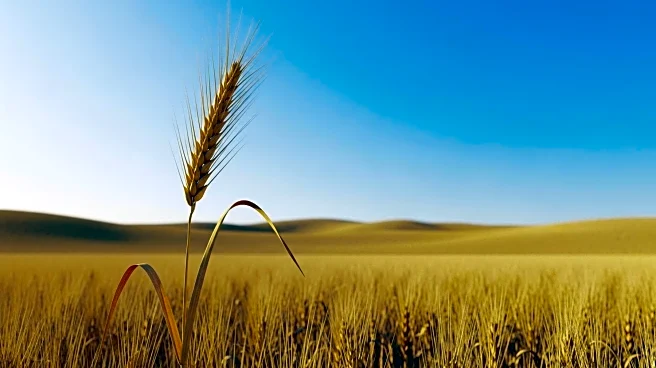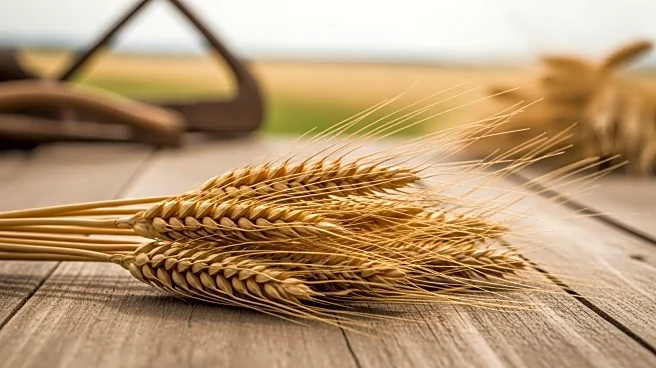What's Happening?
U.S. farmer sentiment has reached a 12-month low in August, as reported by the Purdue/CME Group Ag Economy Barometer. This decline marks the third consecutive month of reduced optimism among producers, particularly those involved in crop operations. The disparity in sentiment between crop and livestock producers is notable, with beef cattle operations experiencing record profitability due to historically low cattle inventories. In contrast, crop producers face weakened returns, with corn and soybean prices forecasted below break-even levels. The Farm Financial Performance Index remains below 100, indicating weak financial expectations for the coming year. Despite this, the Farm Capital Investment Index saw a slight improvement, driven by a more optimistic outlook among livestock producers.
Why It's Important?
The decline in farmer sentiment highlights significant financial stress within the agricultural sector, particularly for crop producers. This stress is exacerbated by crop prices that do not cover production costs, leading to expectations of weaker incomes. The situation poses challenges for U.S. agriculture, potentially affecting food supply chains and rural economies. Livestock producers, however, benefit from high cattle prices, which may lead to increased investment in this sector. The disparity in profitability between crop and livestock operations could influence future agricultural policies and investment strategies, impacting stakeholders across the industry.
What's Next?
Farmers are anticipating larger operating loans in 2026, with 22% of respondents expecting an increase compared to 2025. This expectation is partly due to the need to carry over unpaid operating debt from 2025, signaling increased financial stress. The survey results suggest that financial performance is expected to decline further, potentially leading to more farms facing financial difficulties. Stakeholders may need to consider strategies to mitigate these challenges, such as policy adjustments or financial support mechanisms to assist struggling crop producers.
Beyond the Headlines
The ongoing financial stress among U.S. farmers could have broader implications for rural communities and the agricultural workforce. As financial pressures mount, there may be shifts in land use and farming practices, potentially affecting environmental sustainability and food security. Additionally, the disparity between crop and livestock profitability could lead to changes in farm management and investment priorities, influencing the long-term structure of the agricultural industry.











